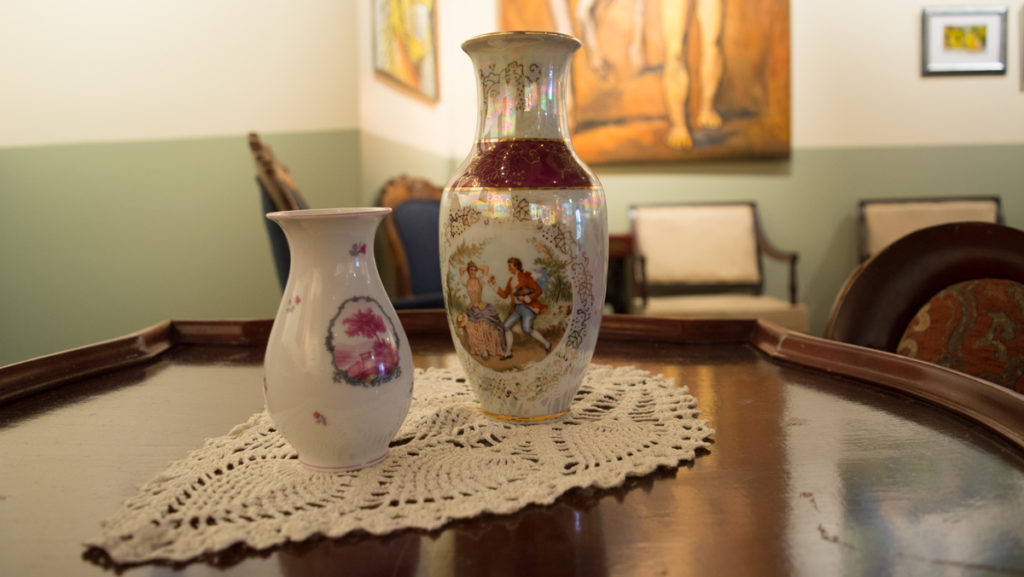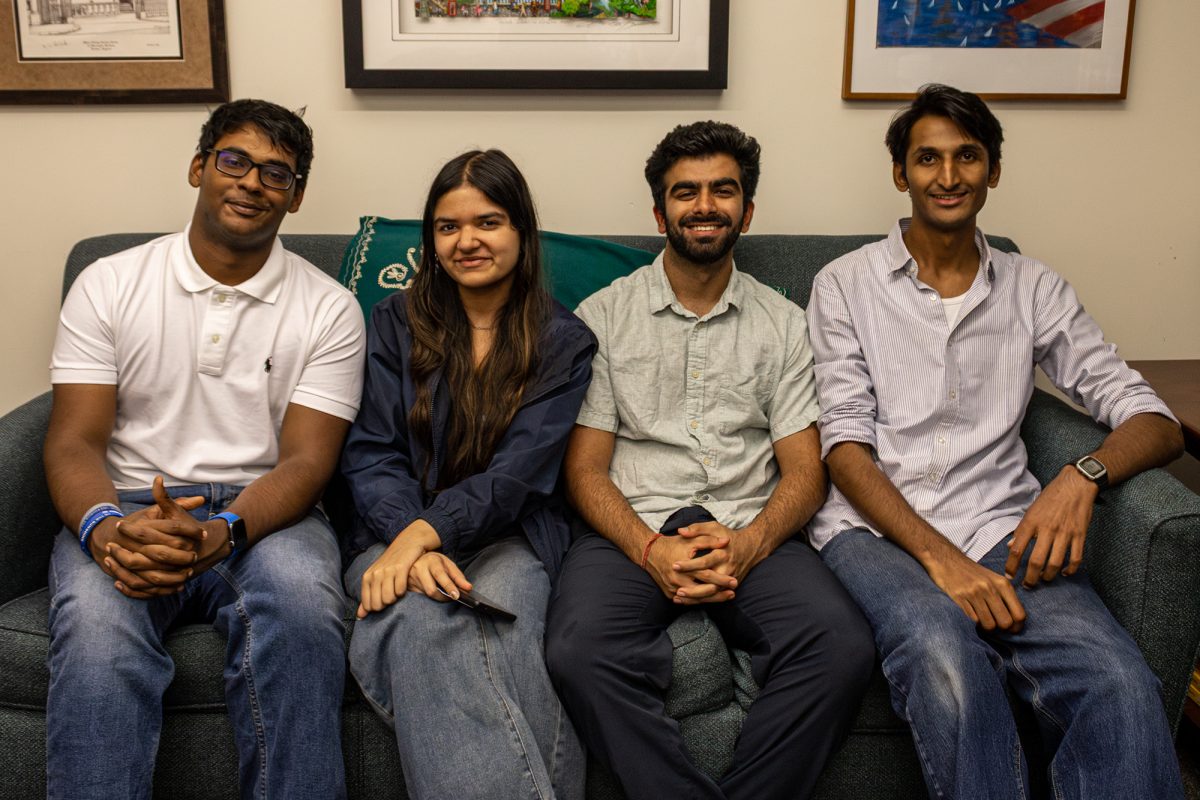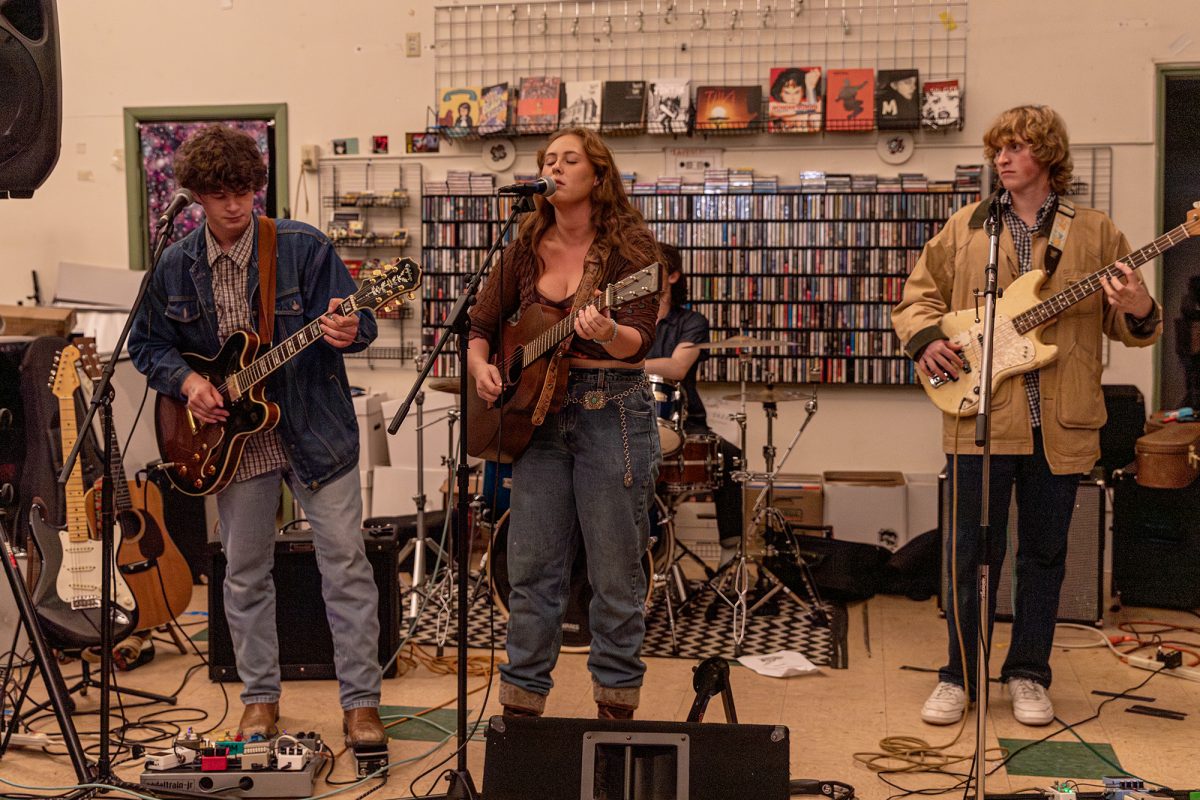The paintings of “Salon De Fleurus” are fake. They are facsimiles of Picasso and Matisse, ghosts of the real artwork that lined the walls of Gertrude Stein and Alice B. Toklas’ famous French literary salon.
“Salon de Fleurus” is the latest exhibit to open at the Handwerker Gallery. Like the five showings in Fall 2017, “Salon de Fleurus” is part of the Handwerker’s “Shapes of Time” series, a set of collections intended to challenge the idea that time is simple, linear and constant. Alongside “Salon de Fleurus” is Andrea Geyer’s “Collective Weave,” an exhibit that highlights some of the forgotten women of history and provides an alternate perspective on modernism. The gallery will host a reception at 5 p.m. on Feb. 1 In celebration of the opening.
The salon is set up in the Handwerker’s main showing room. Several antique chairs — which were lifted from the theater department or secondhand shops downtown — are scattered throughout the room. Using historical records, Mara Baldwin, director of the Handwerker Gallery, attempted to recreate the vibe of Stein’s salon. Stein, the famous writer and art collector, was known for her proclivity for recognizing artistic talent and for her relationship with Toklas. Early 20th–century Europe did not look favorably upon lesbian relationships.
Baldwin said she was adamant that she was not trying to make an exact duplicate of the original salon.
“We’re not trying to be specific,” Baldwin said, as she pointed to black–and–white reference photos of Stein’s salon taped to the walls of the gallery. In each picture, the configuration on the walls is slightly different and no two images look alike; the only constant is Stein’s stern face.
“Gertrude Stein’s relationship with specificity was somewhat fluid,” she said.
Alaina Claire Feldman, director of exhibitions at Independent Curators International, helped coordinate the salon alongside Baldwin. ICI has taken the salon on tour across the world, and Ithaca College is the latest in a lengthy list of stops along the way. Feldman said each iteration of the gallery is intentionally different to reflect the aesthetic and intellectual values of its current location.
“Whenever we take on an exhibition, we try to localize it in one way or another, so that the audience that comes to see the show has a very localized and familiar entry point,” Feldman said. “It’s not a hierarchical exhibition where it’s material from elsewhere that’s made to say, ‘Look, you need to see contemporary art like this, like A, B, C.’”
The original “Salon de Fleurus” — the exhibit, not Stein’s artistic haven — was first established in a New York City apartment in 1992. Patrons could only discover the location via word of mouth, as the building had no markers or signage to indicate the contents of the interior. After 20 years of secrecy, ICI contacted the salon to take it on tour. Since then, the salon has been featured in Poland, Croatia and the Republic of Kosovo.
But simply lifting the salon from New York to Eastern Europe was not enough. The new environment provided an opportunity to view modern art in a different light, Feldman said.
“How interesting would it be to have an exhibition that focused on the narrative of European modern art and the European avant garde?” Feldman said. “And what does it mean to take that exhibition and that narrative and put it in an Eastern European context?”
Baldwin said that ideally, 30 classes from a range of disciplines including writing, English, history and theater will have access to the gallery. She also said she hopes the space will encourage students and faculty to use the Salon for its intended purpose — conversation, education and inspiration.
“I’m anticipating a lot of different classes using this space in different ways,” Baldwin said. “Depending on the group of people who come into space, the conversation may change.”
Mat Fournier, assistant professor in the Department of Modern Languages and Literatures, said he hopes to capitalize on the salon’s educational potential. His Women in French Society class will visit the gallery on Feb. 27. Fournier said the exhibit offered insight into a feminist perspective of modern art while also offering students a break from classroom tedium.
“I think the exhibit is very central to feminism and the importance of art,” Fournier said. “And on an entirely different topic, that it’s very interesting to have a classroom in a different setting.”
Feldman said that the salon is particularly pertinent for a student audience and that by presenting familiar artwork in a different arrangement and context, it would bring up important questions about power and history.
“We should always ask ourselves why we might value one history over another,” Feldman said. “Who gets to tell art history? Who gets to tell history, and why?”
“Salon de Fleurus” runs alongside Andrea Geyer’s “Collective Weave” from Jan. 31 to March 4 at the Handwerker Gallery.














